Back in 2013, Laurens Ehrmann explained the visual effects work on The Smurfs 2. He then went on to work on projects like Ford v Ferrari, Nomadland, WandaVision and Oxygen.
Fabian Nowak has been working in visual effects for over 10 years. Before joining The Yard VFX, he worked in many studios like MPC and ILM and worked on projects like Alien: Covenant, Avengers: Infinity War, Jurassic Park: Fallen Kingdom and The Lion King.
How did you get involved on this movie?
The story began in the summer of 2020. On the advice of Jean Rabasse (Production designer), Pathé Film’s executive producer kept in touch with me to talk about the project. As THE YARD, my post-production company had already partially reconstructed Notre Dame Cathedral for The Smurfs 2, my experience on the subject interested them. I had the chance to discover the smallest setbacks of this fantastic building and thus massively photographed the monument before the dramatic fire of April 15, 2019. Besides, I had already collaborated with Jean Rabasse and we were looking forward to working together again. After the first meeting with Jean-Jacques Annaud, I, therefore, joined the team which had already been preparing the project for 6 months. The first SFX, VFX, production design discussions could begin!
How was the collaboration with Director Jean-Jacques Annaud?
Amazing! He is a director with boundless energy. He is driven by an unlimited passion that he likes to pass on to his team. Jean-Jacques is a fantastic director who leaves no room for chance. Each shot is meticulously thought out and already planned to be in the edit. We were able to create a relationship of trust during the pre-production and then the shooting which allowed us to work smoothly during post-production.
What was his approach and expectations about the visual effects?
Jean-Jacques is a director who has a strong attachment to live sets, SFX… So we had to reassure him about the result we could get with the VFX. Specifically, we did many side-by-side VFX fire tests with live elements to convince him that the VFX fire will mix perfectly with the SFX fire.
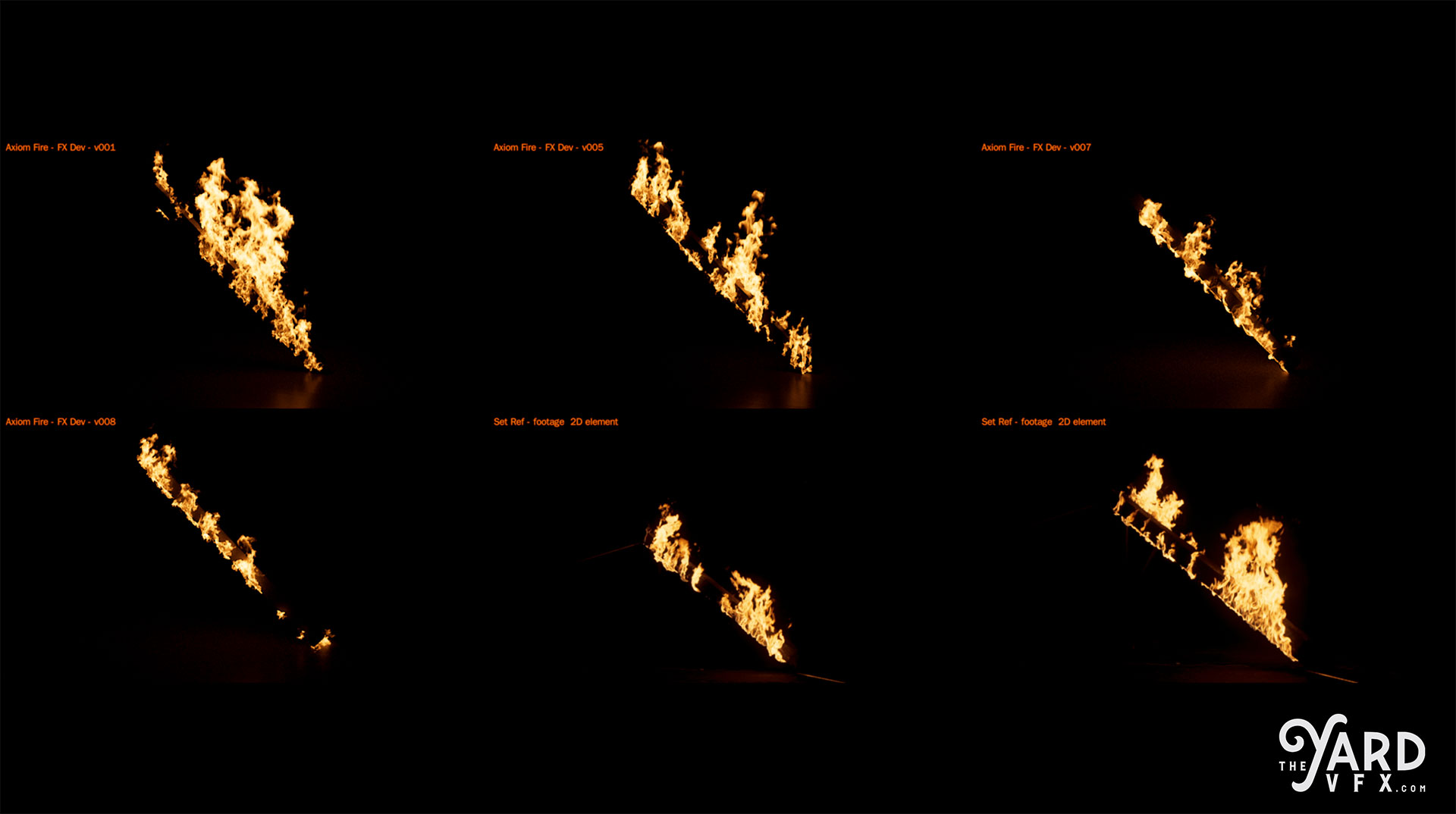
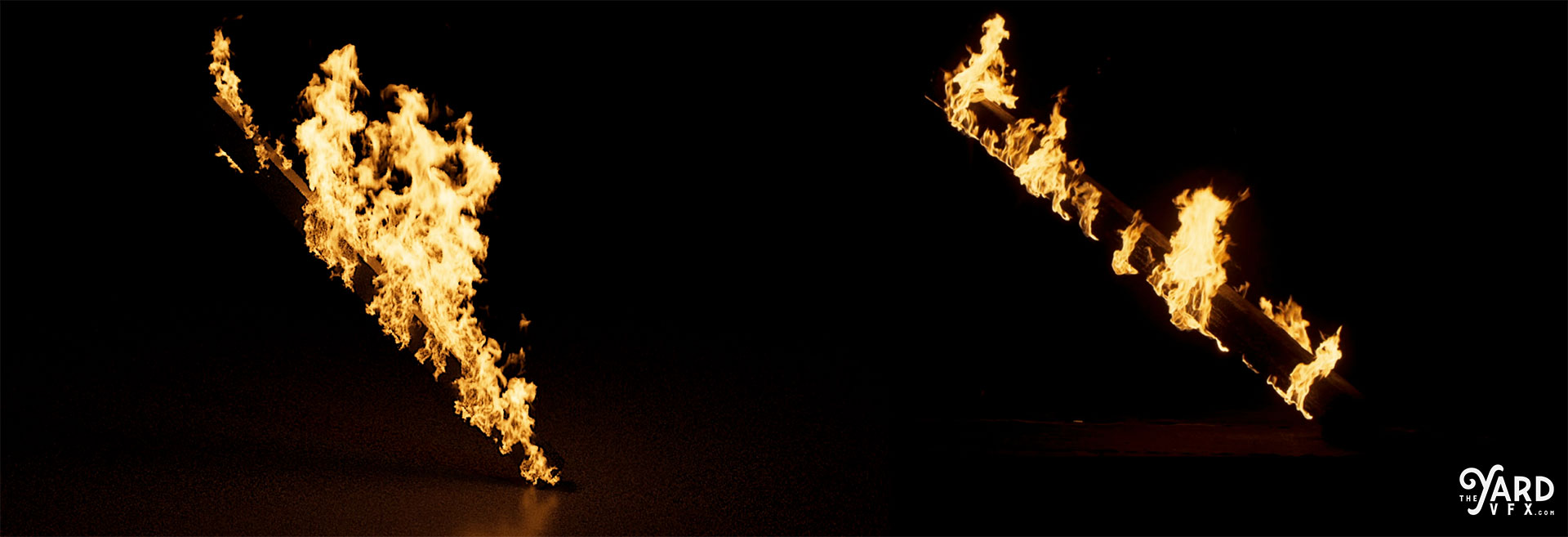
How did you organize the work with your VFX Producer?
I didn’t have a VFX producer to work with me on this project. So I had to prepare the film alone. After the shooting, I was then accompanied by a post-producer.
How did you choose the various vendors?
In a very classic way. I have built a VFX breakdown that the production manager asked me to send for bidding by different Parisian vendors. Based on these quotes and the tests carried out, we have decided to work with MPC Paris and THE YARD. These 2 vendors having already worked on projects involving Notre-Dame Cathedral, the studio was confident.
Can you tell us how you split the work amongst the vendors?
I have awarded the work “geographically”. All the shots taking place on the burning North transept as well as the large shot above the cathedral were given to THE YARD. All the shots inside the cathedral as well as on the forecourt were given to MPC Paris. In total, MPC Paris has taken care of 385 shots and THE YARD around 55 shots.
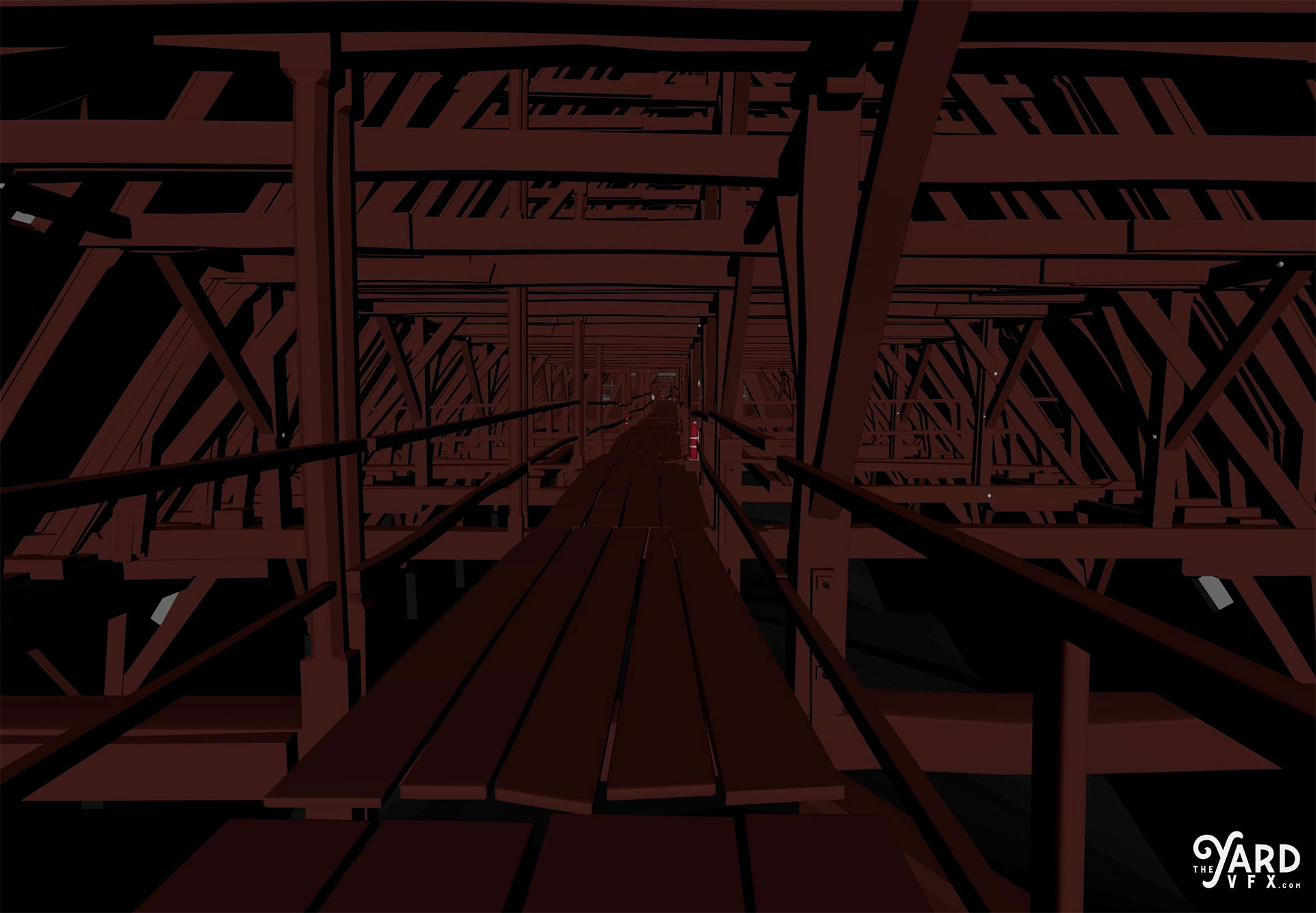
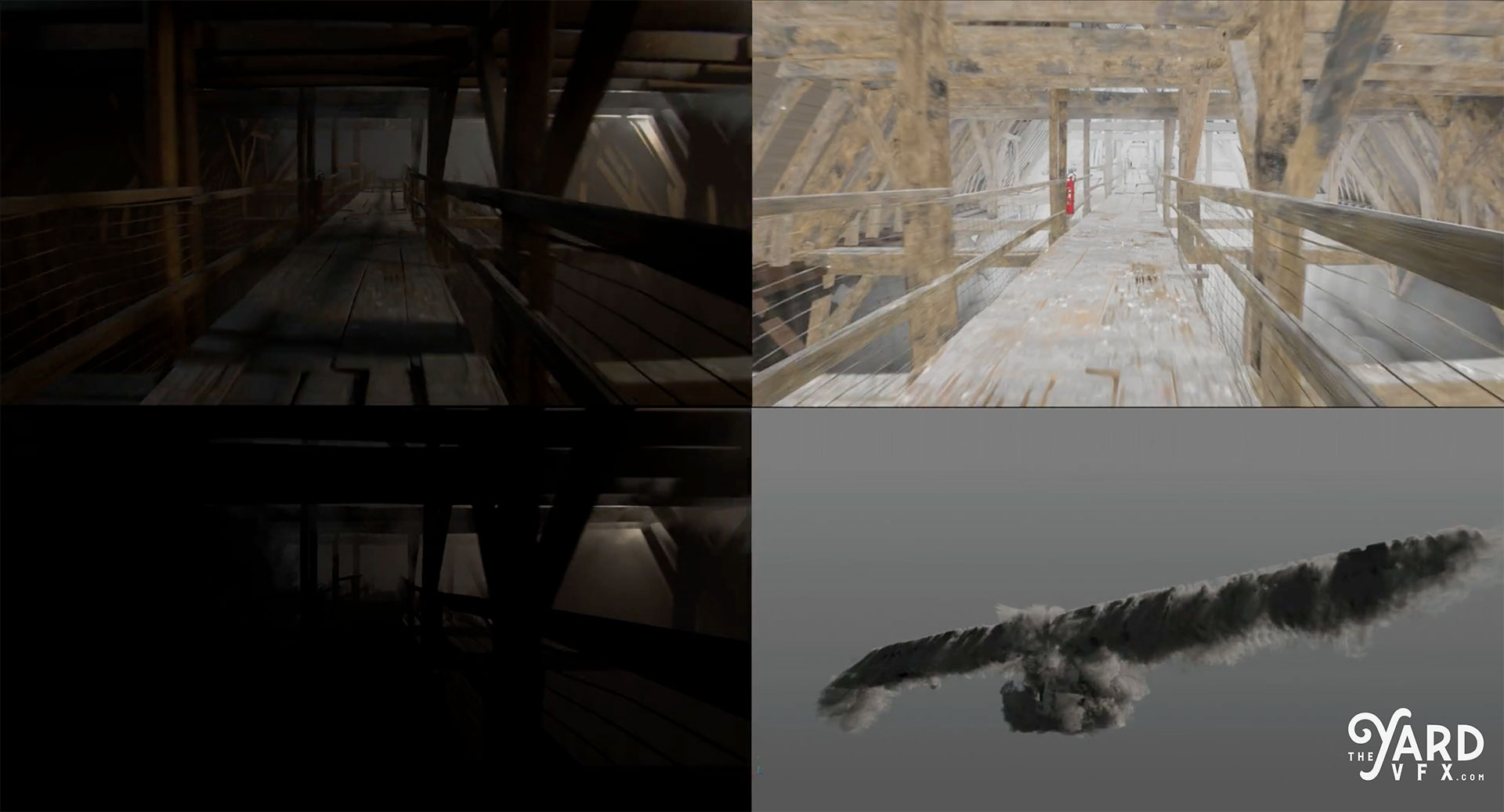
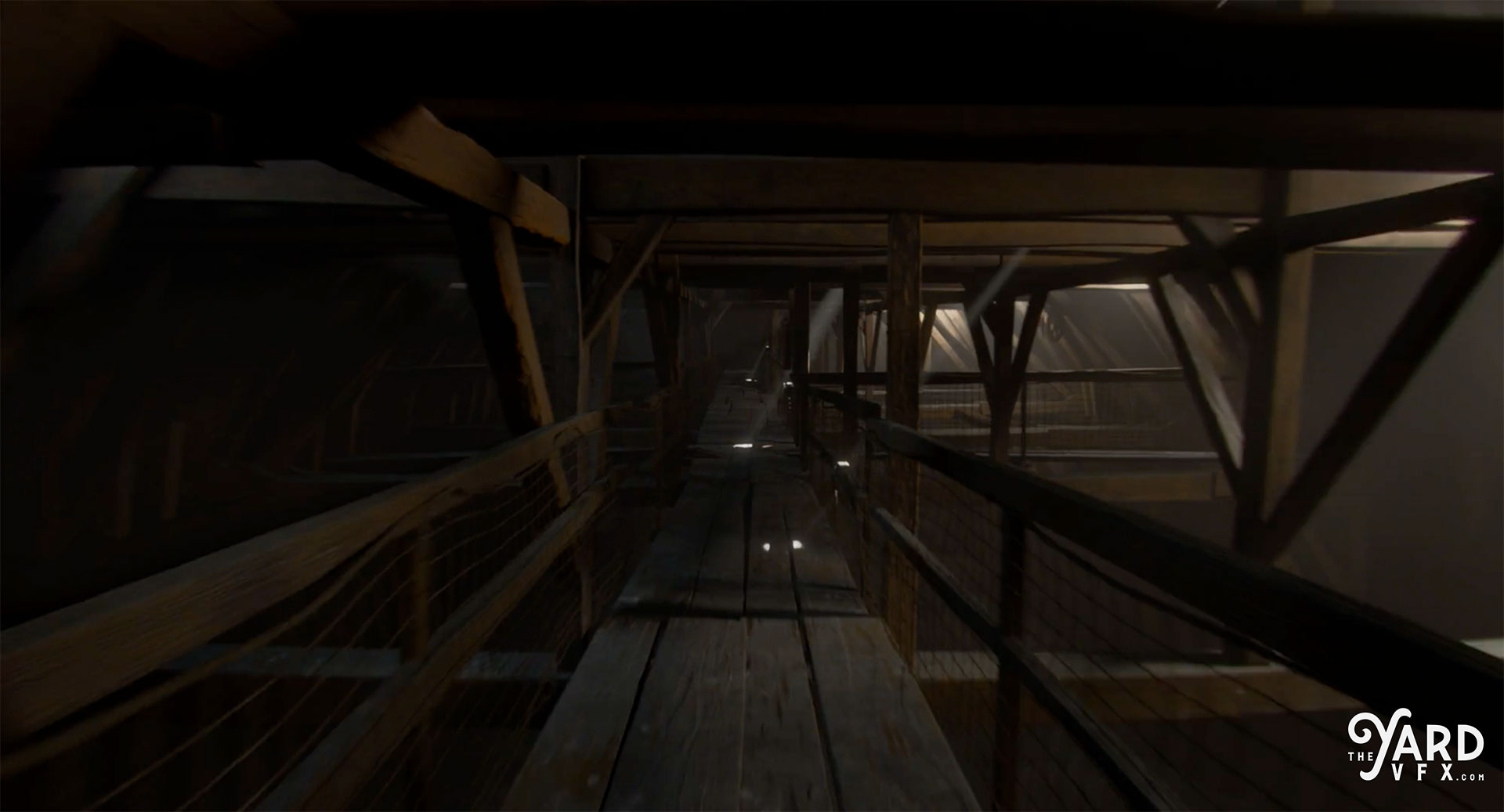
How was the collaboration with their VFX Supervisors?
Fantastic! Lise Fischer, and her team at MPC Paris as well as Pierre Jury, and his team at THE YARD, did an amazing job and it was a real pleasure to work with them. We had regular discussions on how to make the shots and meet the director’s vision. Everything went very smoothly.
Where was filmed the various parts of the movie?
We shot in different cathedrals with similar architectures to Notre Dame Cathedral. Bourges for these very special double collaterals. It is the only cathedral that has this identical specificity to the cathedral of Notre Dame, but the floor isn’t the same. Sens for its checkered floor similar to Notre Dame’s one. The North transept sequence was shot on a backlot in Bry sur Marne. The interior of the north belfry, the gallery of chimeras, the interior of the cathedral were filmed in the studios of “ La Cité du cinéma” in the north of Paris.
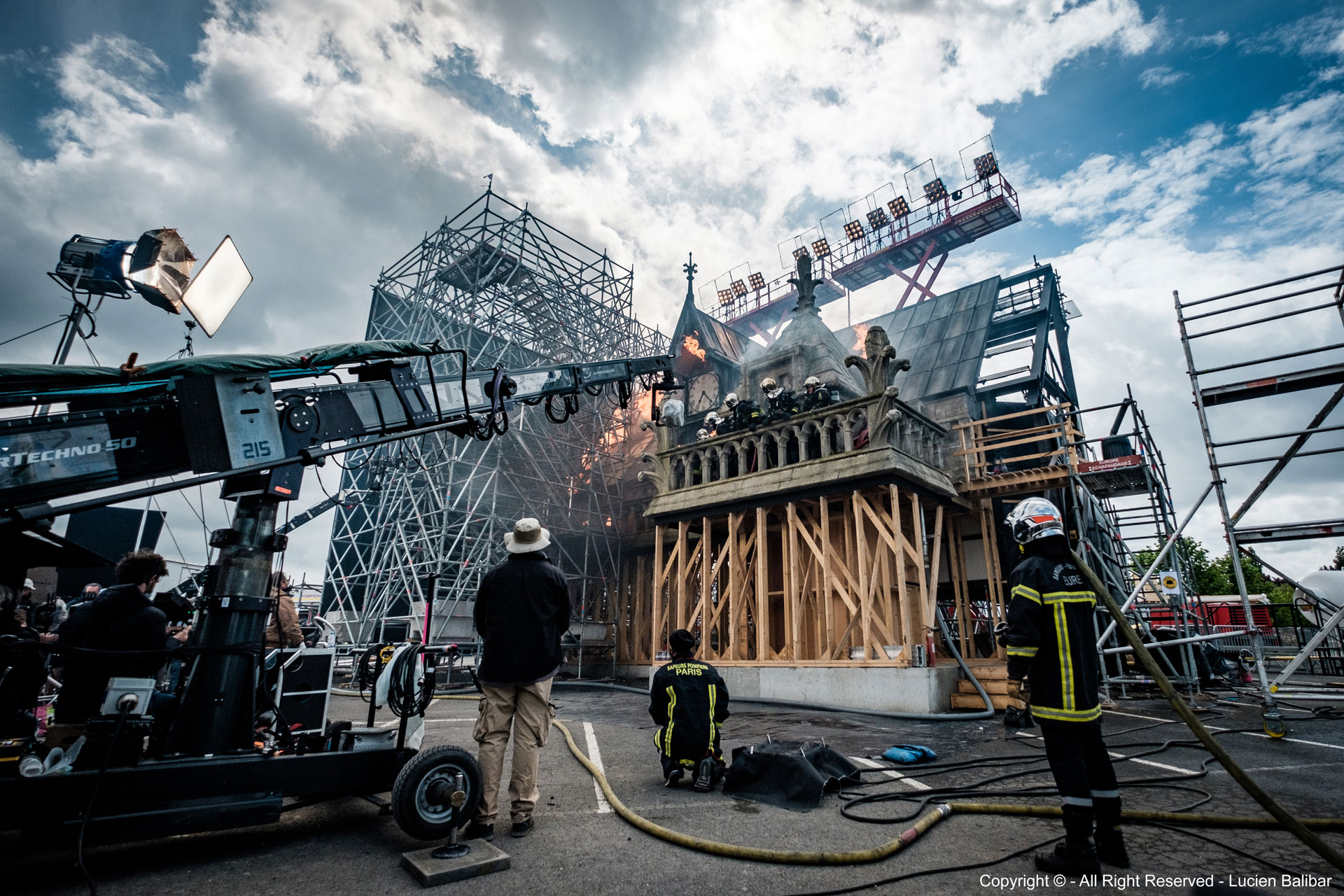
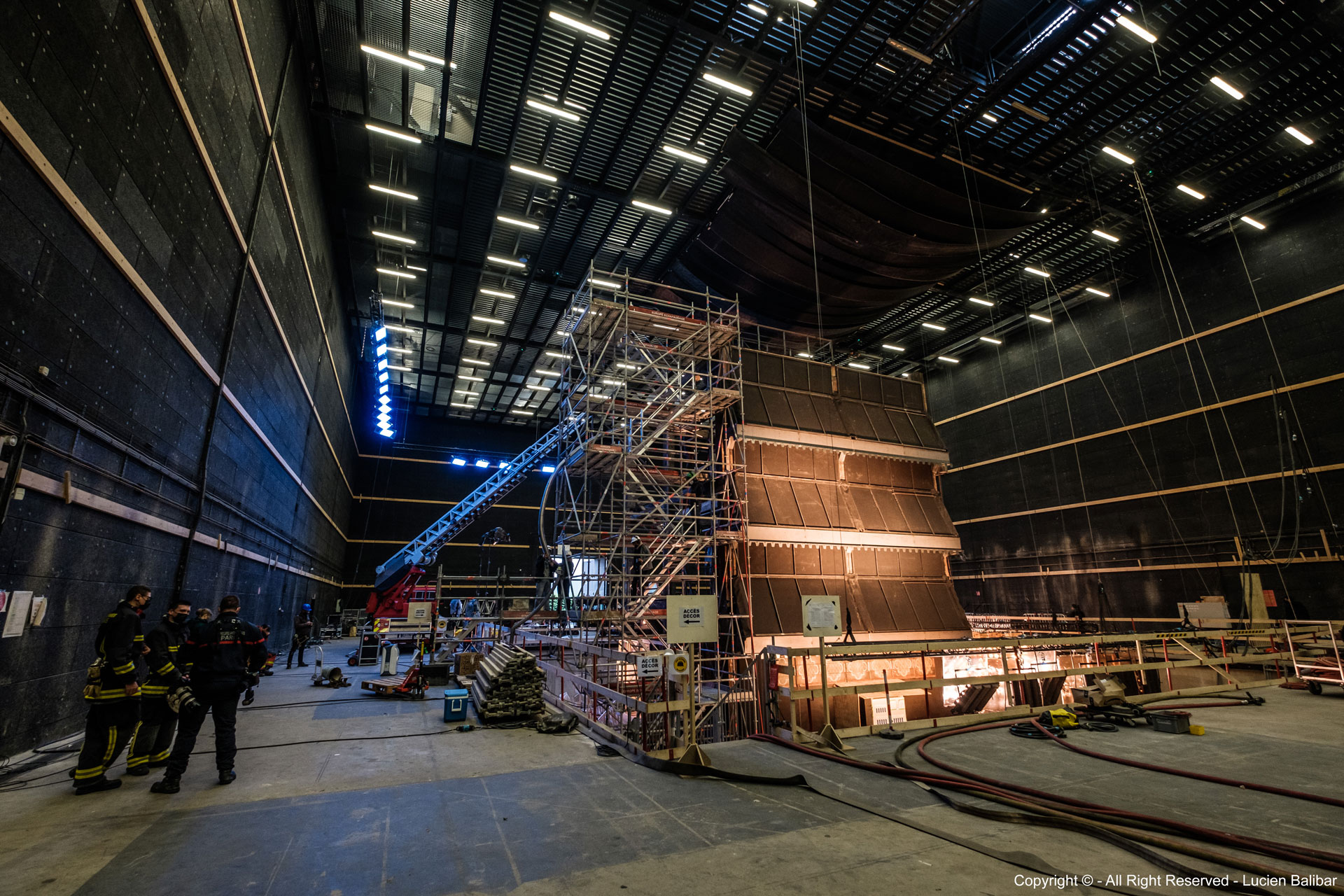
Can you elaborates about the creation of Notre-Dame de Paris?
To rebuild Notre Dame de Paris, THE YARD mixed photogrammetry techniques and LIDAR scanning. Thanks to the CNRS, we were able to obtain the point cloud produced by Andrew Tallon, a pioneering art historian who sadly died on November 16, 2018.
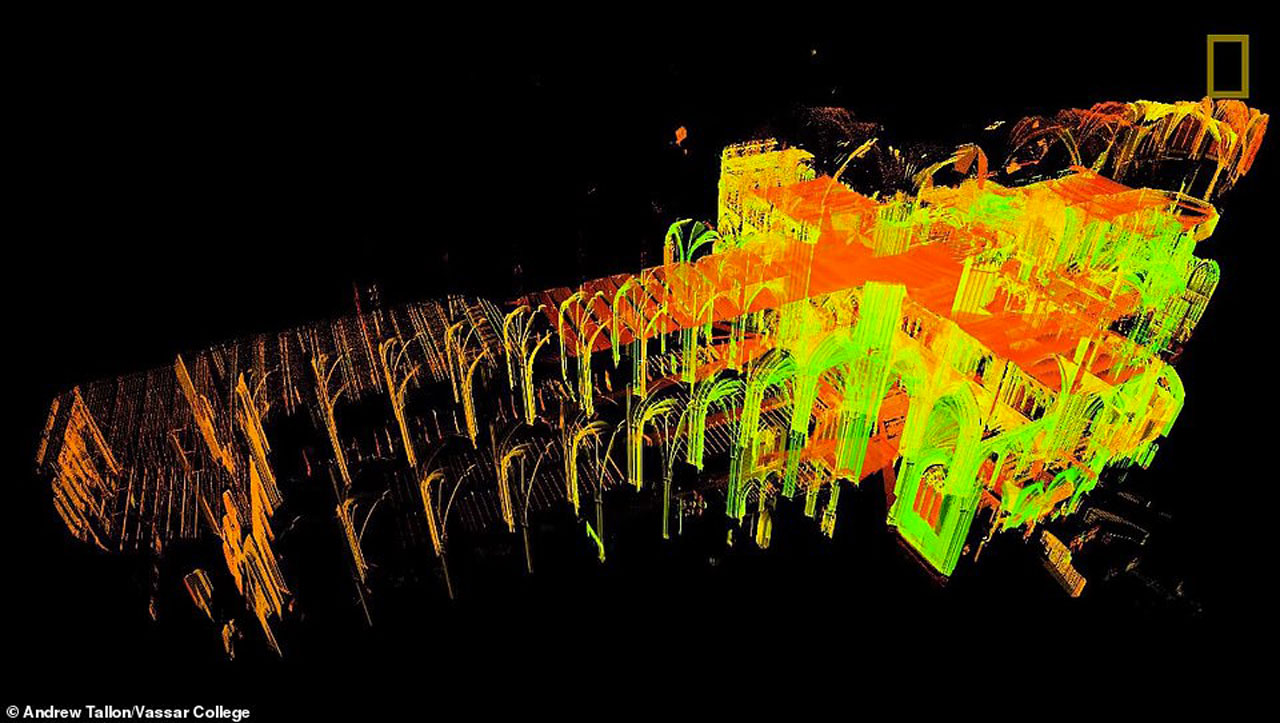
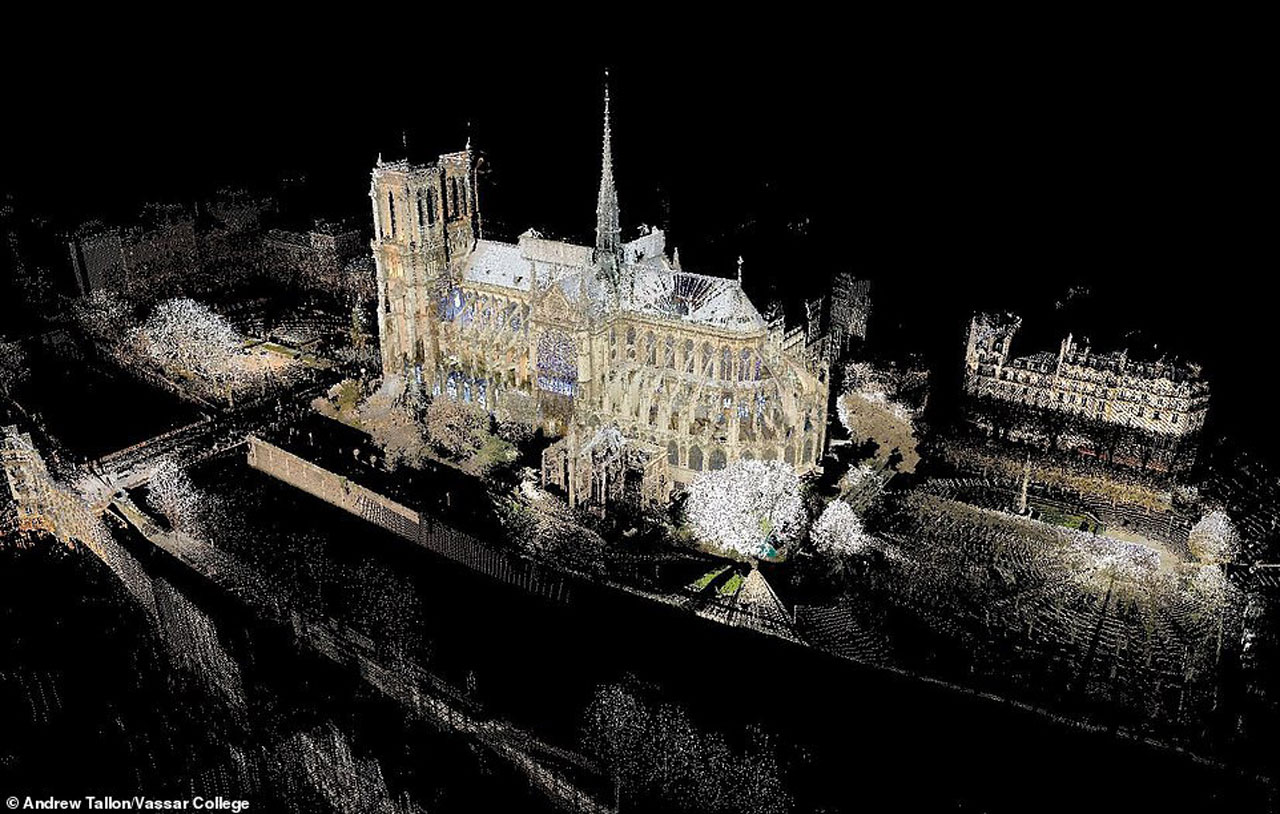
We also had a ton of photos I shot before the fire as well as some drone footage. The combination of all this data and a few hours of modeling made possible the reconstruction of this iconic monument. MPC focused on the interior of the cathedral using the same techniques.
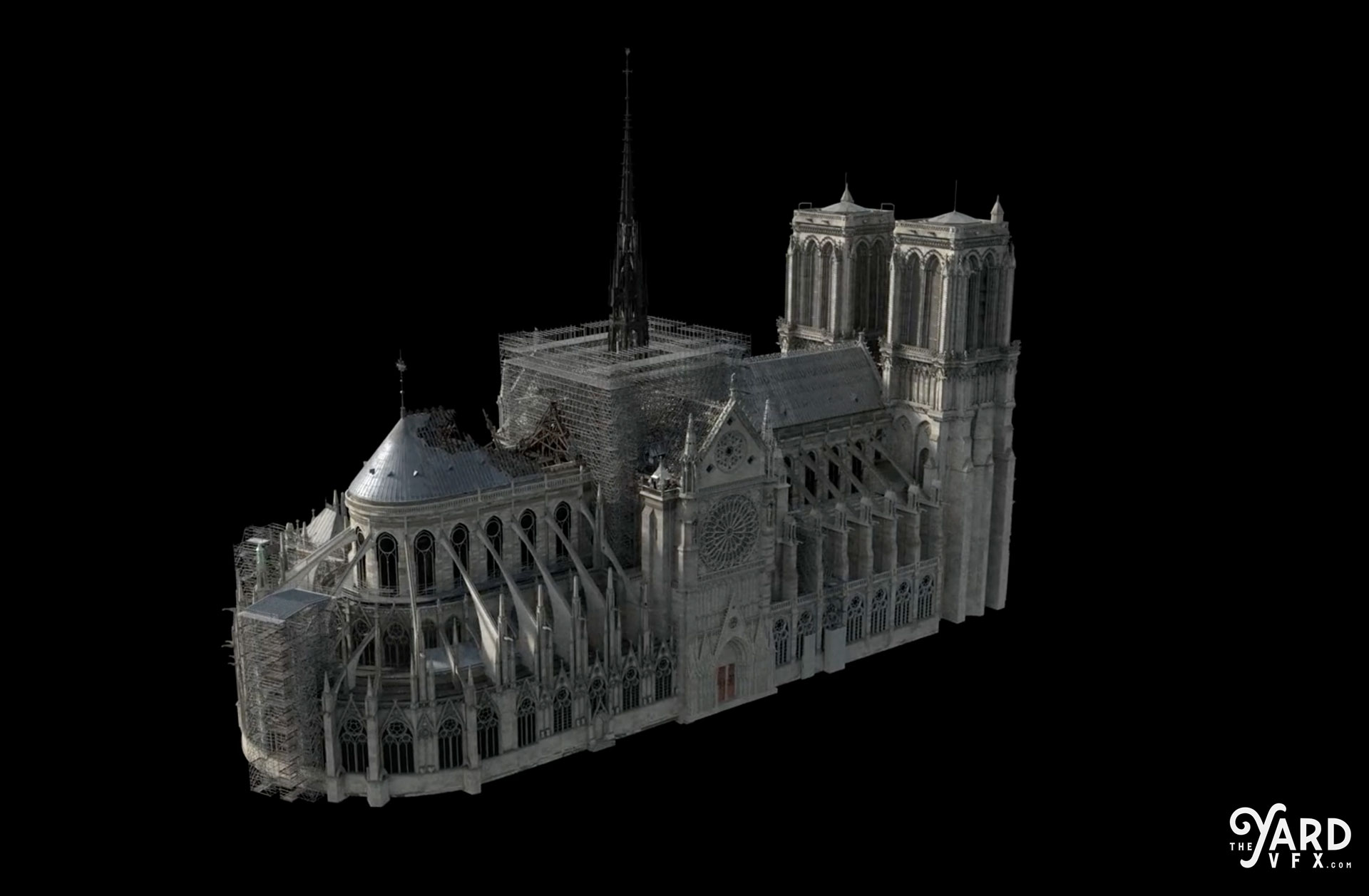
What was the main challenge by creating Notre-Dame?
No particular challenge, we simply had to analyze all the data we had to reconstruct this monument as faithfully as possible.
How did you destroy it?
We didn’t do any VFX destruction. The fall of the spire seen from inside the cathedral was filmed on set. We have only extended the surrounding area. The Big Bang SFX team built gigantic metal baskets placed 15 meters high in the studio. They were driven by 55 motors containing 60 m3 of false balsa beams built with cork and plaster rubble. Once ignited with 100 litres of gasoline, everything was dropped at the right time on the set… 14 cameras ready to shoot… We only had one chance because everything required more than a week to set up.
Did you use procedural tools for the destruction?
Nope.
What technique did you use for the fire?
Fabian Nowak- Head of FX – THE YARD // All the fires were simulated with SideFX Houdini, using intensively a GPU accelerated sparse fluid solver called Axiom. So, sparse fluid simulations for fire and smoke, then used those to advect some particles for the embers and ashes.
Can you explain in detail about the fire creation and animation?
Fabian Nowak- Head of FX – THE YARD // We’ve watched tons of real life references, firefighters documentaries and workshops, the main reference being of course the archive footage from the actual fire that happened on Notre-Dame. That gave us all the information we needed in order to create a realistic fire with the correct behavior. Once in Houdini, we did some Research and Development, in order to match, as closely as possible, some real footage and actual fires that were shot on set. It was absolutely necessary if we wanted the fire from the plates to blend invisibly with the CG fire. The method was to source a lot of temperature to create the base flames, and then advect it with some custom velocities to give it the shape, motion, convection, vortex, bursts of wind, etc. with the help of heavy disturbances, turbulences and confinement, that were also used to get the extra crispy details on our flames.
The main challenge was to find the sweet spot to elegantly balance all these parameters and get the look that we were looking for. Once the look of our flames was convincing enough to fool some people who didn’t know which one was the reference and which one was the CG fire, we’ve used that base setup to populate the whole roof of Notre-Dame, focusing the high resolution mostly on the North Transept, since it was where most of the action and close-up shots were happening. The use of Matt Puchala’s Axiom solver was a big bonus, since we could use all the power of our GPUs to accelerate the simulation times drastically, and make a lot of iterations in a fairly short amount of time. The final shots contain between 20 and 60 fire simulations each. All the FX rendering was done in Houdini, using Mantra.
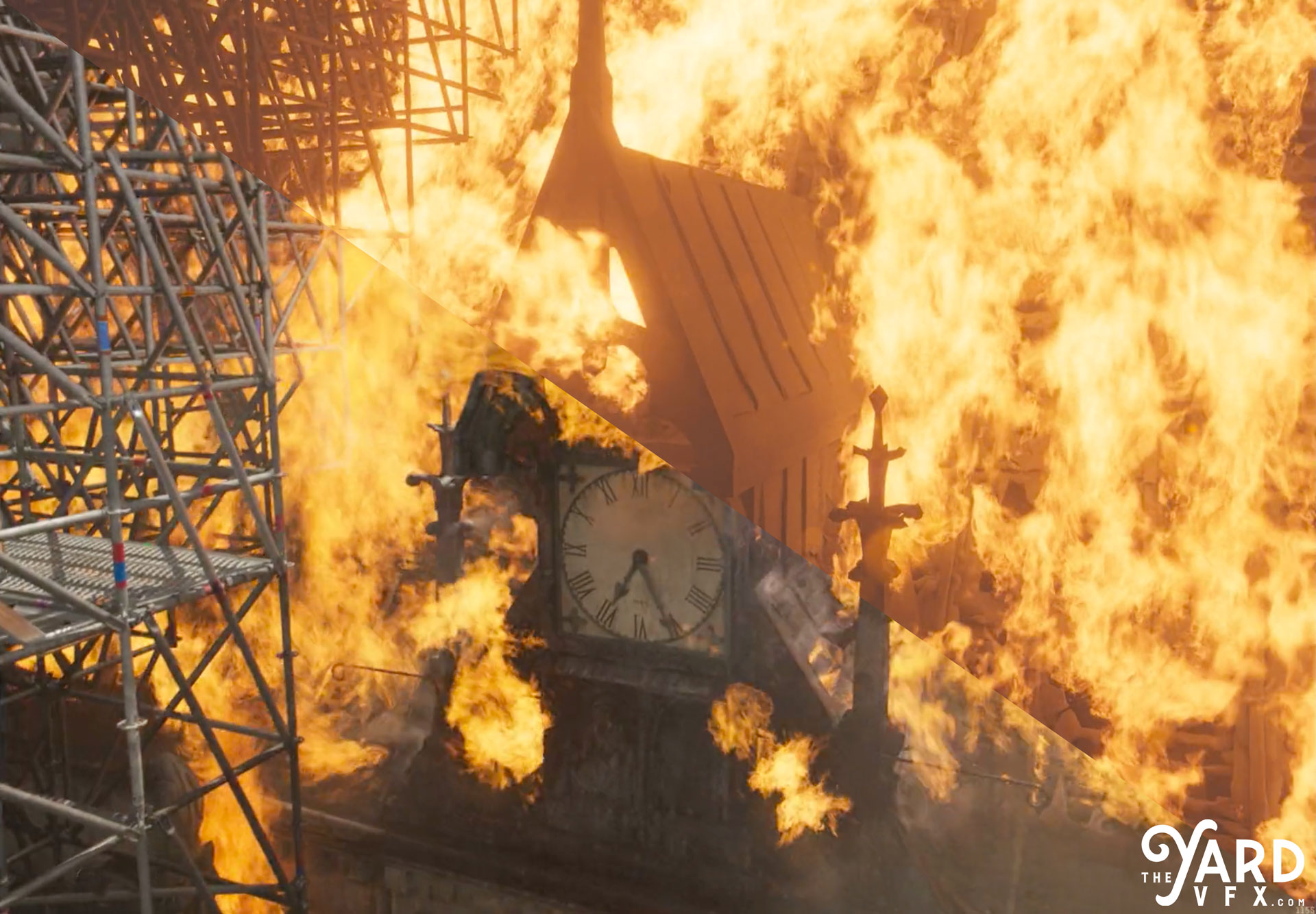
How did you create the massive smoke?
Fabian Nowak- Head of FX – THE YARD // The massive smoke was quite a challenge : we had to match the crazy rolling and billowy motions from the different archive footages we could find, which was sometimes totally different from a shot to another, depending on the time it was shot (temperature within the core of the smoke has evolved a lot during the hours of the blaze), the lighting conditions (giving a different aspect and color to the smoke), the wind and surrounding air temperature, etc.
Another challenge was that the aerial shot was pretty long (400 frames) and we needed to simulate enough preroll so when the shot started it didn’t look like the smoke had just started emitting from the roof. Also the camera was flying by pretty closely, and ended much higher in the sky, with a pretty wide angle, showing the massive smoke plume to drift away from the cathedral above Paris. So that involved different resolutions in the simulations, depending on the distance from the camera.
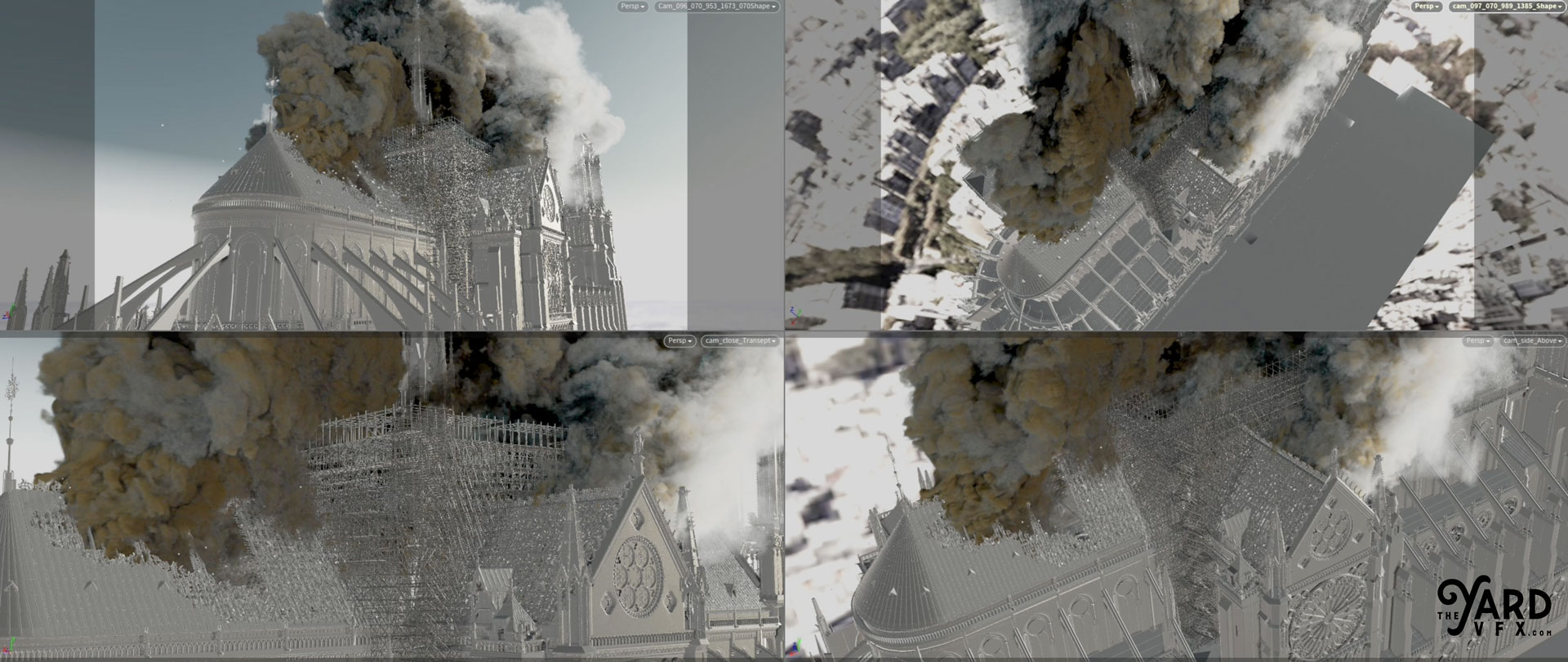
So, in the end, it was about a dozen different smoke simulations blended together, all advected by the fire simulations from within.
Plus, some extra smaller smoke simulations to get these wispy high temperature white smokes that were going through the cracks and lead plates from the roof, mostly visible on the cathedral’s nave.
The rendering of that smoke was another challenge by itself. We had to find the right amount of scattering phase, absorption color, shadows intensity, and so on, in order to get that « cloudy » yet « pyroclastic » yet « illuminated from within » look. I think we’ve used pretty much all the tricks from the book to achieve this. And voilà !
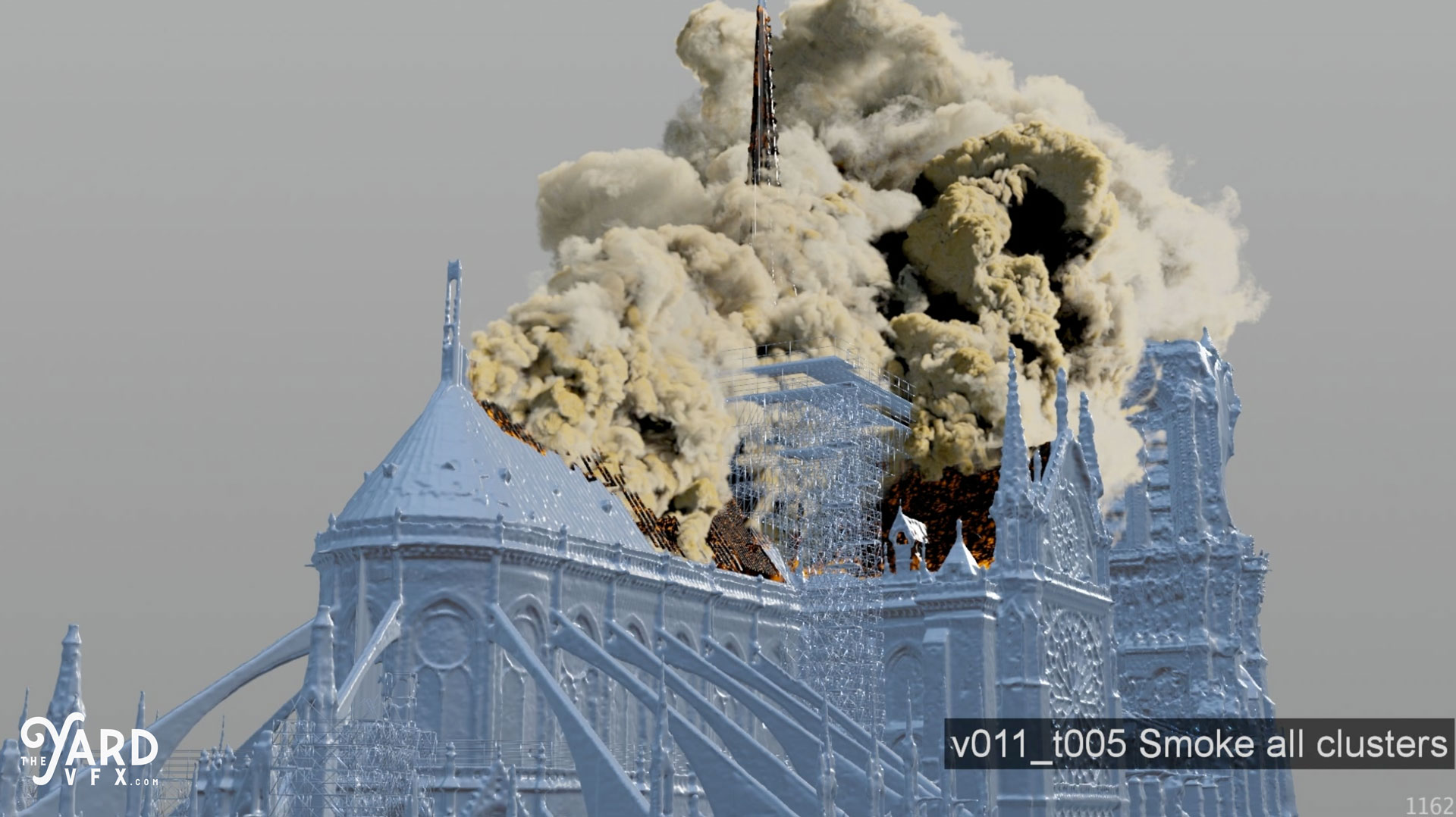
Can you elaborate about the mix of archive footage with the actors?
This dramatic event having been covered by all the televisions of the world, the production amassed hundreds of hours of archive. Videos of individuals were also recovered. It was then the art of editing that made possible to mix all these elements.
Did you want to reveal to us any other invisible effects?
There are no particular invisible effects. We have added a lot of smoke, fire, embers, ashes. A lot of bluescreen, set extension, camera cleanup and crew reflections in so many helmets.



Which sequence or shot was the most challenging?
The drone shot over the cathedral.
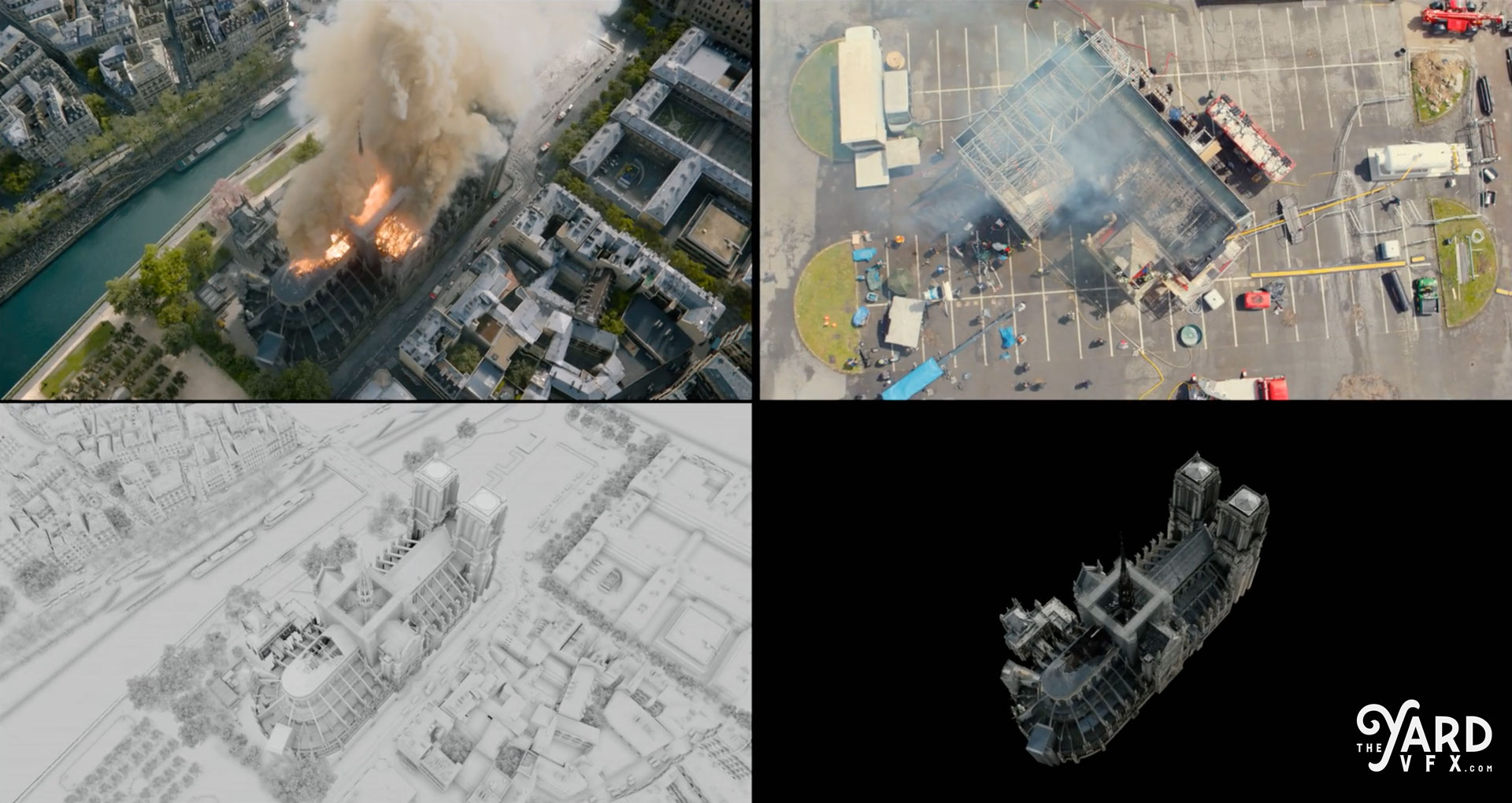
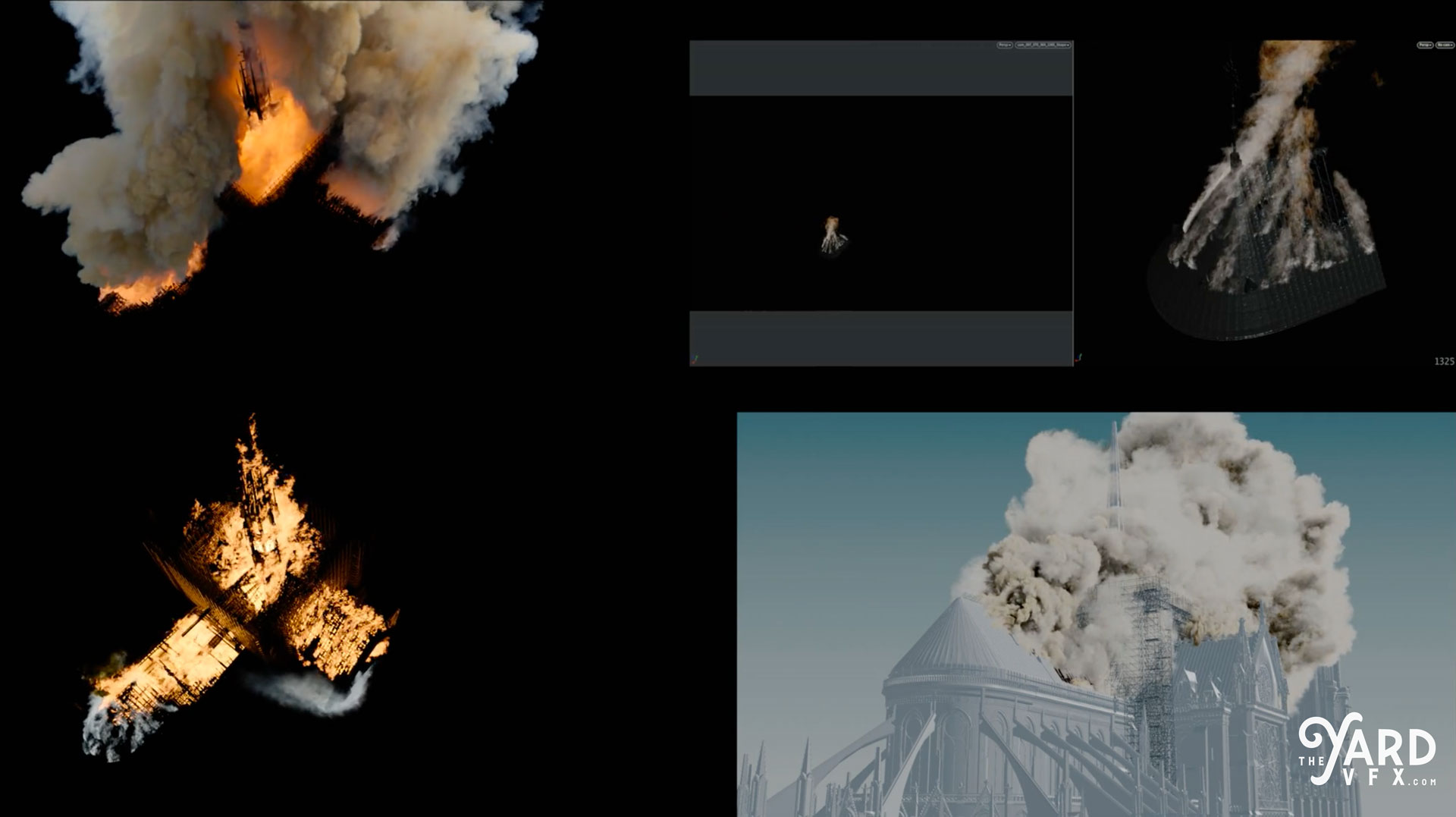
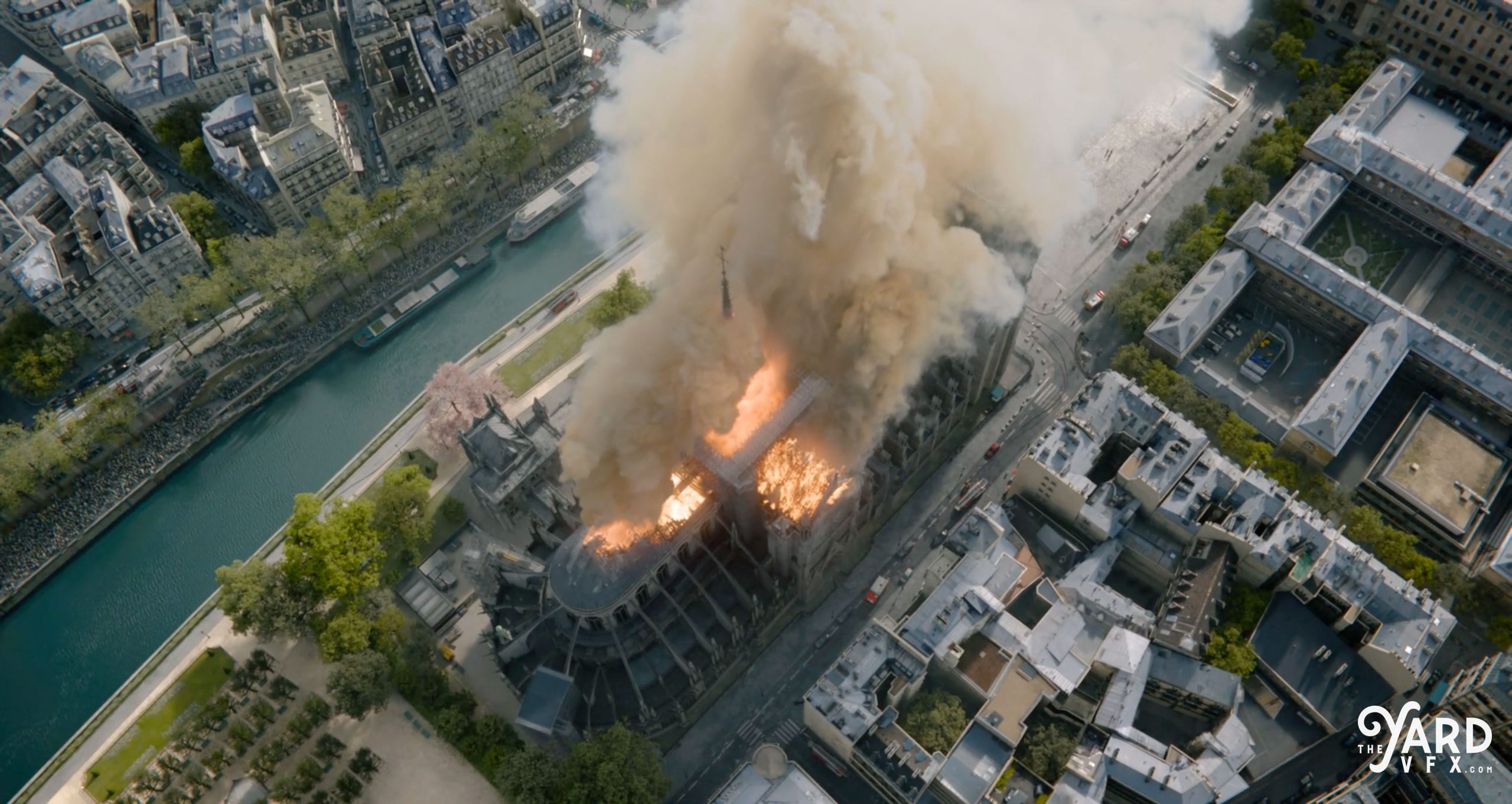
Is there something specific that gives you some really short nights?
As long as we were on the same page with Jean-Jacques, I wasn’t worried about the result.
The two vendors, MPC and THE YARD were really amazing. I slept really well on that show.
What is your favorite shot or sequence?
I have a lot of favorite shots but I would say sequences with the North transept on fire as well as the interior of the cathedral on fire.


What is your best memory on this show?
The constant pleasure of sharing this wonderful adventure. Jean-Jacques regularly highlights that this is the most pleasant filming he could have done. And indeed, this adventure was fantastic. The chance of wandering between all these old stones, of filming with these majestic sets whether they are historical or entirely reconstructed in the studio. This film was a real human adventure at the level of Notre Dame Cathedral.

How long have you worked on this show?
I started the show during summer 2020 and delivered the movie in January 2022.
19 months in total.
What’s the VFX shots count?
Almost 440 shots in the final cut.
What is your next project?
I can’t tell you 🙂
A big thanks for your time.
WANT TO KNOW MORE?
The Yard VFX: Dedicated page about Notre-Dame Brûle on The Yard VFX website.
© Vincent Frei – The Art of VFX – 2022






